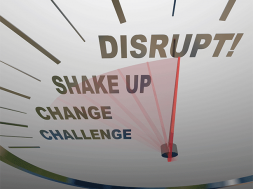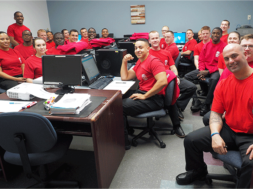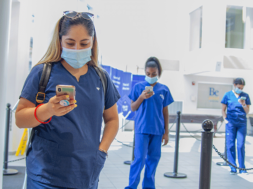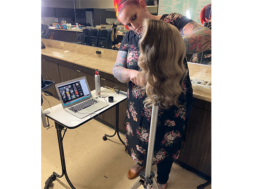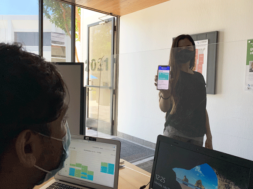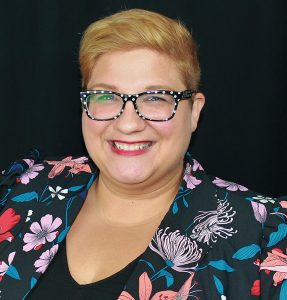
Innovative Disruption: Challenge Your Institution to Level Up
By Theresa Miulli, Director of Education, Compass Rose Foundation
Disruption: a change or interference in routine and tradition. In education, disruption has the ability to strike fear in academic leadership for a variety of reasons. Disruption can exist in the form of academic or personnel scandal, compliance shifts and change mandated from accrediting bodies or the Department of Education, government shutdowns, and a multitude of other interruptions in how academia does business day to day. Adversely, disruption can challenge the status quo, force evolution, and impede on the notion of “it is how we have always done it.” Disruption, when unplanned and forced, can break down the most stable of school cultures. However, I challenge each of you to see disruption for what it can be. Disruption can serve as a catalyst for much-needed change in the educational arena. View it as an opportunity to meet rising student expectations. Innovative disruption can provide your institution an opportunity to level up. Embrace the change and challenge your education community to stretch their current state of mind into a mindset of evolution and invention.
Innovative education is ever evolving education. Innovative disruption is the idea that an institution can continue to grow in population, increase student outcomes, and continue to reach new generations of students through planned, exciting, managed, and continual change. Change, however, is terrifying!
So many schools get stuck in an educational rut because rather than challenge the status quo, leadership, administration, and faculty settle into an easier, less productive form of education delivery – exhausted erudition.
Exhausted erudition leads to unstimulated students, lower retention, lower placement rates, and, ultimately, the lack of sustainability and longevity for an institution. If you are ready to challenge yourself and your institution, keep reading. If you are ready to push for higher enrollment numbers, higher retention, and higher graduation rates, embrace innovative disruption!
Innovative disruption must infiltrate throughout multiple departments within your school in order to be effective. Now to be clear, I am not stating change everything, all at once, while disregarding what is working well. I am not saying to disrupt the culture for the sake of change. I am encouraging each of you to continually reflect and ask questions. How could this be better? How can I meet student needs more effectively? How can we serve students while pushing them to be better than the last generation of students? A culture of innovative disruption must be embraced by the team majority to effectively plan and implement transformation on a consistent basis in your school. Just because “we have always done it that way,” does not mean it’s the best way right now. It may have been the best way at one time, but times are changing, and it is our job to change with them. As influencers, it is our job to address these changes and adjust to meet the current student’s needs. Follow me on a journey through student outcomes, admissions, and overall student success, while at least considering that perhaps, it is time for some disruption in your institution.
What is our purpose as career schools? This should be simple and easily answered by all of us. As a career institution, our job is to educate and ultimately, get students to secured, sustainable employment while concurrently guiding them towards gainful employment. Now, here comes the harder question. How do we continue to evolve what we are doing to meet both student and employer demands? Do we need to? Can we continue to do what we always have and continue to meet employer needs? Take a moment to consider the programs and trades your institution serves. Have their needs changed? In an effort to increase graduation and placement rates in your institution, I offer you five potential disruptions to integrate into your school.
- Career pathways advising. In business, it is often stated to develop your strategic plan with the end goal in mind. First, determine what it is you are trying to achieve, and then model your plan of action to best reach that end goal. Starting with the end in mind allows a team to continually visualize the ‘why’ behind the hard work put into a project. With this in mind, consider how focusing on the end goal throughout a student’s program can ultimately lead to higher success rates for your institution and your student. So often academia focuses on the journey of education, forgetting that for a student in a career college, the journey is just a necessary step to their end objective – employment. Going one step further than employment – sustainable income and gainful employment. Career Pathways provides students a series of specified pathways for which a student can endeavor in their chosen scope of practice. For example, a cosmetology student has a multitude of opportunities upon graduation; color specialist, platform artist, educator, or even salon owner. A well thought out Career Pathways advising program involves students narrowing in on their exact goals and dreams and meeting with advising on a very regular basis to move through a checklist that will lead them to said career goal. This focused, career driven advising continues to remind students of the end goal, which could ultimately lead to higher graduation and placement rates for your institution.
- Student success coaching. Taking a hint from the community college sector, Student Success Coaching models are beginning to make gains in the traditional world of education. Student Success Coaching is more than your typical advising session. Easily integrated into a Career Pathways Program, Student Success Coaching is student-centric monthly advising that focuses not only on the student’s success within the school but in navigating through the many obstacles outside of school that could ultimately prohibit the student from completing their program. A strong student service program, coupled with career coaching and curriculum advising, builds a strong Student Success Coaching program. When combined with Career Pathways, this advising method caters to both students and future employers as it is intended to coach the student in general life skills as well as focusing their school time on career goals. When incorporated into a student’s program, a student may walk out of your doors with more confidence and a stronger understanding of how to succeed in the professional world of work.
- Faculty-driven employment workshops. How involved is your faculty in the placement efforts of your institution? Are they not the experts in the field in which you are placing them? Faculty-driven employment workshops offer students insight into the field they hope to work. Often, we find our institutions segregating into departments rather than working together towards the end goal of a lucrative career. We see administration working with students on resumes, portfolios and, ultimately, placement into a field they, themselves, may know little about. Integrating faculty into your placement efforts creates a holistic team with everyone working towards a common goal. Faculty are your best resource in not only collecting information on where graduates may work, but garnering employment verifications, as is often needed by our accrediting bodies. Your faculty are your experts in the field and will have the best knowledge on what businesses are hiring in their scope of practice! Use them for networking, outreach, and for building student connections to these businesses.
- Diversity and inclusion initiatives. Taking a cue from the traditional education sector, career colleges (yes, even the smaller ones) may need to start considering how diversity within your school is impacting student success overall. Are we, as a sector, embracing and incorporating a multitude of cultures into our school ethos or are we simply continuing with a narrow focus on the classroom setting and learning objectives? Students commit to completion when they feel they are a part of something. Reflecting on current diversity initiatives while concurrently creating programs to embrace the many cultures in your school can lead your institution to higher success.
- Extracurricular activities. So often, the career college sector focuses on the trades we are teaching, we forget to provide students a series of alternative experiences that teach beyond our textbooks. Innovative education embraces extracurricular opportunities, mirroring activities that you may find in the traditional sector of higher education. Groups like Skills USA, Premiere, and Professional Beauty Association offer competition opportunities for students in trade schools. Student clubs and community service groups can flourish and unite a campus, giving students the support and harmony they may need to complete their programs.
Are you ready to embrace innovative disruption yet? Cultural shifts moving from a culture of stagnant, traditional education into an environment of embracing change and evolution are difficult for a team to achieve.
Disruption in career services, advising, diversity, and extracurricular activities are just the tip of the iceberg.
Change can be terrifying, especially when working with long term employees. It is so easy for both faculty and administration to settle into the cushiony, comfortable world of tradition and stability, and it is often hard for education professionals to stretch both themselves and their education models into something a little less traditional. Innovation can happen in small, manageable, digestible steps. Innovation should be managed around a team of change agents and not the hopes and dreams of one. So, what do you think? Is it time for your institution to challenge the status quo?
Theresa Miulli currently sits as the Director of Education for Compass Rose Foundation in Fort Myers, Florida. With a Masters in Nonprofit Management, and Diploma in Cosmetology, she has a unique point of view, allowing her to manage a campus from the viewpoint of a Technician, Faculty Member, and an Administrator. Theresa is currently a Doctoral student with the University of Florida, studying Higher Education Administration, focusing her dissertation on Vocational Education and Gainful Employment legislation. Theresa’s experience has led her to be invited to speak at a variety of conferences, to include speaking for the Career Educator Alliance, the American Association of Cosmetology Schools, and for the Accrediting Commission of Career Schools and Colleges. Her focus continues to be on educator professional development, curriculum development, and instructional design. As a school leader, she continues to push to increase student outcomes through innovative education initiatives and strong team building.
Contact Information: Theresa Miulli // Director of Education // Compass Rose Foundation // 239-292-6325 // tmiulli@hotmail.com // tmiulli.wixsite.com/theresamiulli // https://www.linkedin.com/in/theresamiulli/ // https://www.instagram.com/theresamiulli/
